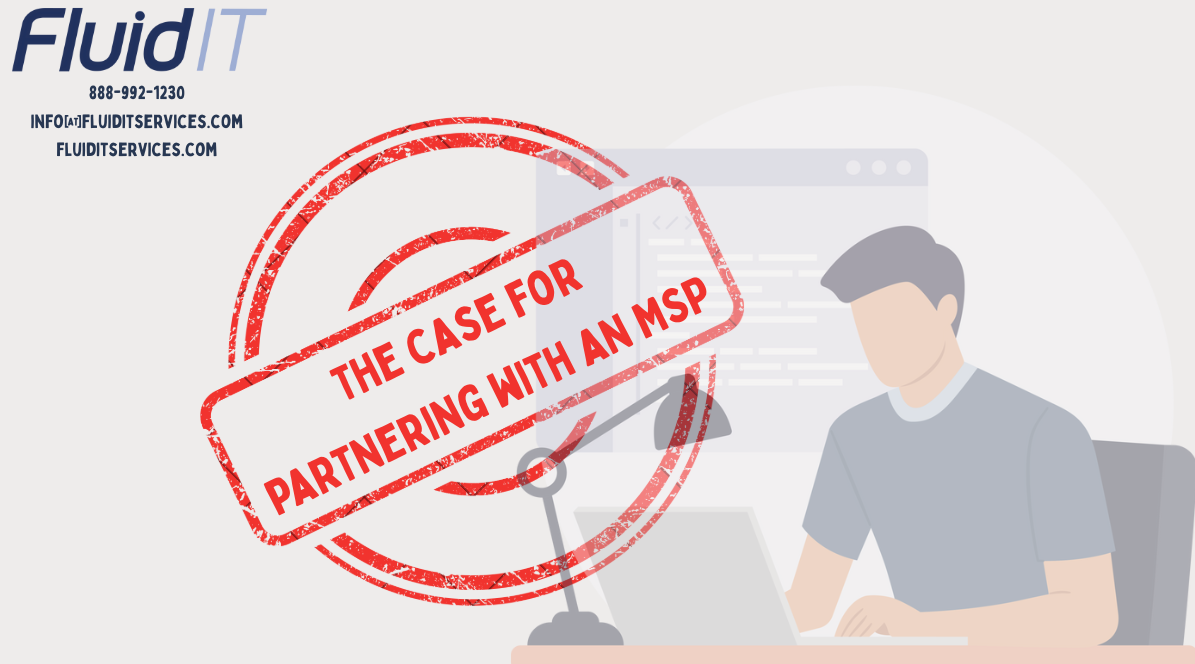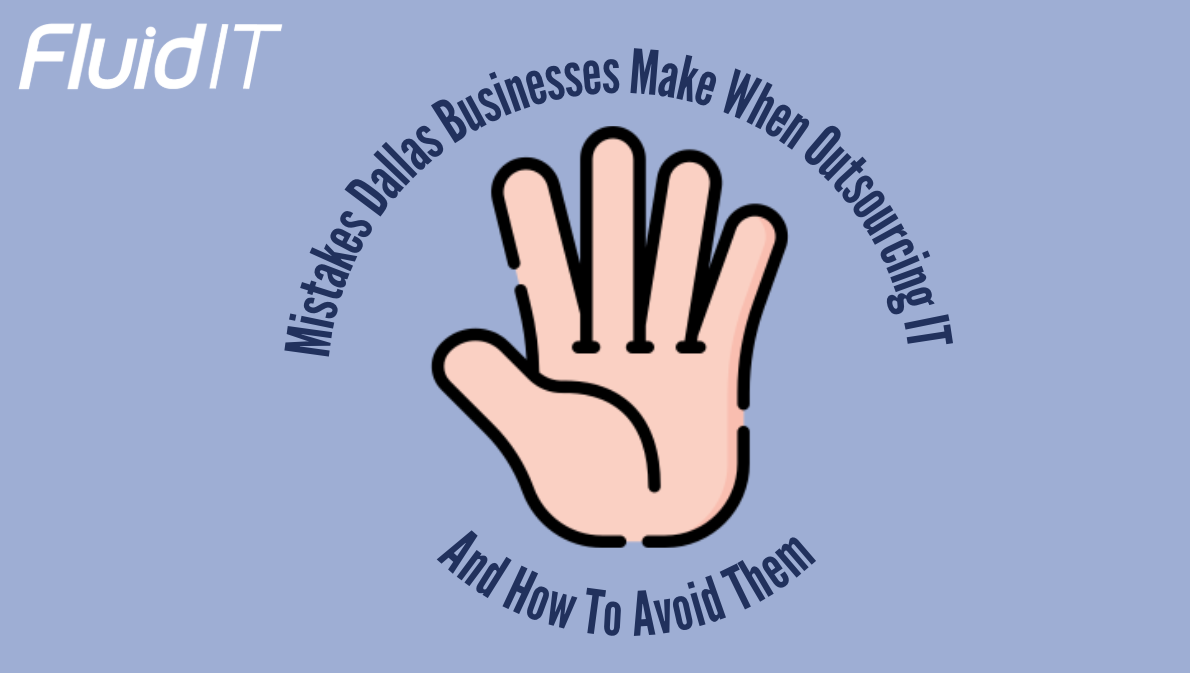The Case for Partnering With an MSP
Hiring an in-house IT professional offers a few key benefits. However, this approach comes with significant drawbacks, especially for a new or small...
4 min read
 Wade Yeaman
:
Mar 12, 2023 11:59:36 AM
Wade Yeaman
:
Mar 12, 2023 11:59:36 AM
.png)
While it is THE key method and tool to help ensure technology success within a business, it is likely the least understood, most overused buzzword, and poorly practiced discipline. I read it on most Technology Service Providers (or Managed Service Providers - MSPs) websites and sales collateral without any details to corroborate that they possess the experience and skillsets required to produce and manage a technology roadmap process.
Before going too deep, let’s start by level-setting on the definition of a technology roadmap. As the name suggests, it is a roadmap that provides the direction one intends to take, both at a macro and detailed level, as it pertains to the use of technology within a company or organization. An additional critical element is the items on the roadmap align to the actual business objectives of the company or organization it is being used for.
A solid technology roadmap is a key strategic tool companies can use to not only ensure they are using the right technologies for their business, but it can also be a differentiator companies use to get ahead of the competition. Likewise, not having a technology roadmap is akin to sailing without a rudder, directionless based on where the wind happens to take you.
All technology roadmaps require four key components:
In my 20+ years of doing technology roadmaps for companies with 15 to 50,000 employees, you may be surprised to know the common thread with them all is the lack of the number one requirement to have a roadmap: defined and agreed upon business objectives for the company over the next 12-24 months.
Well over 90% of the time, business objectives are not written down. Additionally, when interviewing the senior leadership or c-level of the company, many have what they consider to be the business objectives, but when compared with one another, the objectives don’t match at all. The CEO’s is different from the CFO’s, which is different from the COO’s and so on.
How can a company expect to consistently achieve its business objectives when there are five versions of them?
The obvious answer is that they can’t. Because of this reality, IT often pushes to create a technology roadmap that is the catalyst to bring the business leadership together to at least agree on the top three to five objectives. At that point, IT now has a foundation they can use to define and map technology initiatives required to meet those objectives.
Once a technology roadmap is in place, the business and IT provider have a tangible method for discussing technology initiatives and a continual process to ensure IT is aligned with the business.
Let’s use a simple example. The business states one of its objectives is to improve their collaboration within the company and improve email security in the next three months. The company is currently on Gmail. The IT department recommends migrating to Microsoft 365 email with Defender security and Teams collaboration and believe the migration and implementation will take two weeks.
The technology roadmap will show an initiative called “Migrate to Microsoft 365 email, Defender, and Teams with a two-week duration.” The initiative is shown in the Productivity, Communications, and Security areas since it aligns to those processes. Based on the schedules of the business and IT team, the initiative is planned to start in four weeks.
The roadmap clearly states what is to be done, what it addresses at a high level, when it is to be done, and how long it will last.
Two weeks prior to the planned start time, the business is notified they are being audited by their insurance company and need to complete a very detailed technology questionnaire due in one week. It is obvious from the content that IT must own this project and answer the questionnaire. This is an unplanned initiative that must be done, and because there are not unlimited IT resources, it will push the migration initiative back.
Using the roadmap, a new weeklong unplanned initiative is added to the roadmap. After discussing with the business leadership, the migration initiative is shifted a week out to allow for the unplanned event. In this way, the roadmap works as a continual tool to keep business and IT aligned and in focus. Any question regarding why the migration was moved can be quickly and easily addressed.
As a technology managed service provider, we often are ‘the IT’ for our clients. For this reason, a mandatory aspect of our onboarding and ongoing relationship with all clients is creating and maintaining a technology roadmap.
We have an obligation to our clients to take a strategic approach to our relationship and work. This requires that we consistently demonstrate that we understand their business objectives, can adjust as they adjust, and can show how we plan to meet their objectives via technology initiatives.
While the concepts may seem simple, creating, managing, and maintaining a technology roadmap is not easy. It requires the business to:
A clear and concise technology roadmap can be presented in a visual format on a single page that is easily understood by both the business and technology reader. It is an invaluable tool used to get and keep IT and the business aligned. It can also be viewed as a rescue tool to help businesses quickly get back on track with their technology initiatives and spending. For this reason, it is also an excellent tool for IT budgeting.
In IT, we often carry very large toolboxes. The Technology Roadmap is the most important tool on top that tells us what other tools to use.
In conclusion, a technology roadmap is a powerful tool for businesses to ensure that they are using the right technologies to achieve their objectives. However, it is also one of the most misunderstood and underused tools in the industry.
A solid technology roadmap requires four key components, and the most critical is defining and agreeing upon business objectives. It is not uncommon for companies to lack this requirement, which is where a technology managed service provider like Fluid IT can help. As a trusted partner, Fluid IT can work with businesses to create and maintain a technology roadmap that aligns with their objectives, thus allowing them to use technology strategically to gain a competitive advantage.
If you want to get started on building a technology roadmap for your business, contact Fluid IT today for a consultation.

Hiring an in-house IT professional offers a few key benefits. However, this approach comes with significant drawbacks, especially for a new or small...

As the Dallas-Fort Worth Metroplex continues to grow as a major business hub, companies across cities like Frisco, Plano, Arlington, and beyond are...

Outsourcing IT services can be a smart strategy for Dallas-Fort Worth businesses looking to optimize efficiency, reduce costs, and access specialized...